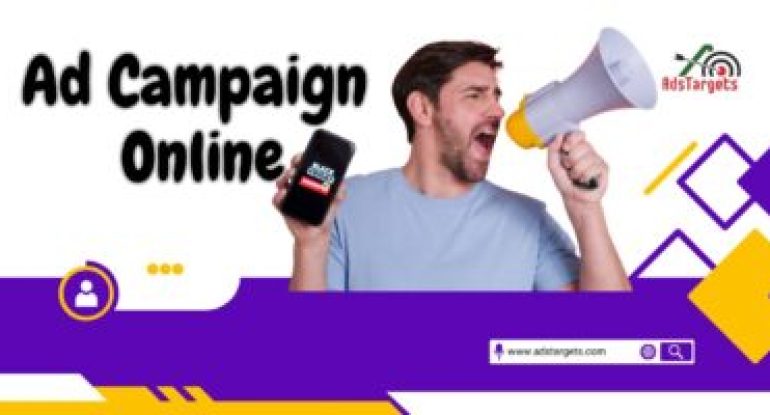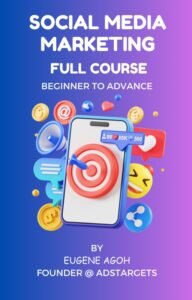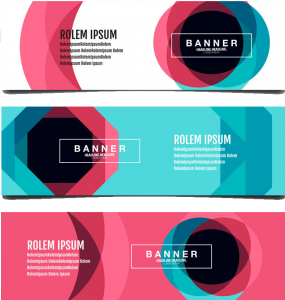Want People to Notice Your Product? Here’s How to Start an Ad Campaign Online (The Easy Way)
Advertising is just a fancy way of telling the world why your product, service, or brand is worth paying attention to. Great ads don’t just sell stuff, they make people feel something. They spark curiosity, build trust, and help turn a “maybe” into a “yes.”
As someone who’s been in marketing for a while, I can tell you this: the best ads don’t happen by luck. There’s a method to it. You need to understand who you’re talking to, choose the right place to say it, and know how to track whether it’s actually working.
If you’re ready to start an ad campaign online and want it to actually get clicks, sales, or signups, you’re in the right place. In this guide, I’ll walk you through the basics step by step—no fluff, no confusion, just clear, simple advice anyone can follow.
So grab your idea (or product), and let’s start an ad campaign online that actually works.
Table of Contents
ToggleWhere To Start Your Ad Campaign?

#1. KNOW EXACTLY WHO YOU’RE TALKING TO
Before you start an ad campaign online, you’ve got to ask yourself one big question: Who am I making this ad for? It might sound simple, but it’s super important. If you try to talk to everyone, you end up talking to no one.
The more specific you are, the better your ad will perform. Let me break it down.
Let’s say I’m trying to promote a fitness app. I don’t just aim it at “people who like fitness”—that’s way too broad. Instead, I go for something like: busy professionals between 25 and 40 who want fast, intense workouts they can do at home. Now that’s a clear target.
Why does that matter? Because once you know exactly who you’re talking to, it becomes way easier to create an ad that feels personal—like you’re speaking directly to them. And that kind of ad? It gets clicks. It gets attention. It gets results.
Research (like the kind McKinsey did) even shows that personalized ads can boost sales by 5 to 15%. That’s real growth—just by understanding your audience better.
So, if you’re about to start an ad campaign online, don’t skip this step. Get crystal clear on who your ad is for. Imagine them. What do they need? What do they care about? What’s their day like? Once you know that, you’re already halfway to creating an ad that hits home.
#2. DO A LITTLE DETECTIVE WORK (A.K.A. MARKET RESEARCH)

Now that you know who you’re trying to talk to, it’s time to learn what makes them tick. If you want to start an ad campaign online that actually works, you need to step into your audience’s shoes and really understand them. That’s where market research comes in, it’s like detective work for advertisers.
So, what do you need to find out? Think about stuff like:
#1. How old are they?
#2. Where do they live?
#3. What do they like to do for fun?
#4. What problems are they trying to solve?
#5. What kind of stuff do they buy?
#6. What apps or websites do they spend the most time on?
#7. What kind of ads are they already seeing?
This info helps you figure out how to talk to your audience in a way that makes them say, “Hey, this ad gets me.”
There are lots of easy ways to do this. You can:
#1. Look at research reports and stats online
#2. Ask people to fill out quick surveys
#3. Talk to real customers and ask them what they like or dislike
#4. Even strike up a casual chat with someone in line at the store—seriously!
One expert, Baruch Labunski, once said the best way to learn is to just ask people straight up what would make them buy something. Simple, right?
Once you gather all that info, you can create something called a buyer persona. That’s just a made-up profile of your “ideal customer.” It helps you imagine who you’re talking to every time you write an ad.
Bottom line? If you want to start an ad campaign online that gets clicks, sales, and love from your audience, don’t skip the research. The more you know about the people you’re targeting, the better your ad will speak to them.
#3. CHOOSE THE RIGHT TYPE OF AD (SO YOU DON’T MISS YOUR AUDIENCE)
Now that you know who you’re talking to, it’s time to figure out how you’re going to talk to them. This step is all about choosing the right ad format. When you start an ad campaign online, picking the right format is kind of like picking the right shoes—some fit better for certain situations.
Every ad format has its strengths. Some are great for catching attention. Others are better for explaining things. And sometimes, mixing a few works best. Here’s a simple breakdown of the most popular ones you’ll see online:
#1. Display Ads
These are the picture-based ads you see on websites and apps. Think of banners at the top of a website or those little square ads on the side. They’re visual, fast to grab attention, and great for building brand awareness. According to Statista, these ads make up around 30% of digital ad spending in the U.S.
#2. Video Ads
People love watching videos—it’s quick and entertaining. That’s why 91% of businesses use video to promote their products. You can use short videos for social media or longer ones on YouTube or streaming platforms. Just make sure the video matches where it’s being shown.
#3. Audio Ads
These are like mini commercials you hear while streaming music on Spotify, Apple Music, or even podcasts. They’re usually 15 to 30 seconds long. They’re great if you want to catch someone’s ear while they’re already tuned in.
#4. Influencer Marketing Ads
This is when someone popular online—an influencer—talks about or uses your product in their videos or posts. People trust influencers, so when they recommend something, their followers often listen. These ads can be reviews, sponsored posts, or even full takeovers of a brand’s social media for a day.
#5. Search Engine Ads (PPC)
When you search something on Google and see the top few results marked as “sponsored,” those are search ads. They’re text-based and super effective because they show up when people are already looking for something similar. You only pay when someone clicks—hence “pay-per-click.”
#6. Social Media Ads
These are ads you see on Facebook, Instagram, LinkedIn, or X (formerly Twitter). They come in lots of flavors—text, image, video, even swipeable carousels. With billions of people on social media, it’s one of the fastest-growing places to advertise, with expected revenue hitting $262 billion by 2028.
#7. Podcast Ads
Don’t ignore this one. Podcast ads are sneaky good. They’re usually audio-based and placed at the beginning, middle, or end of an episode. Some podcasts even let you place video ads if they stream their episodes on YouTube.
Here’s the key: when you start an ad campaign online, think about where your audience hangs out and how they like to get their information. If your audience scrolls social media all day, go with videos or image ads. If they listen to podcasts on the way to work, audio ads could be perfect.
You don’t have to pick just one. Try a mix. Test what works. Ads aren’t one-size-fits-all—and that’s actually a good thing.
#4. KNOW EXACTLY WHAT YOU WANT THE AD TO DO

Before you hit publish and start an ad campaign online, you’ve got to ask yourself a super important question: What do I want this ad to do?
It’s like baking a cake—you don’t just throw stuff in the oven and hope for the best. You follow a recipe because you want a specific result. Ads work the same way. Every ad should have a clear goal from the beginning.
When I start an ad campaign online, I usually pick one of these goals:
#1. Brand Awareness
This is about helping people get to know your brand. You’re not trying to sell them something right away—you just want them to see your name and feel good about it. Think of big brands like Boeing. You may not buy a plane, but you know who they are. That’s brand awareness at work.
#2. Product Awareness
Now you’re zooming in. Instead of just your brand, you’re showing off a specific product or service. The goal here is to help people understand what the product is, how it works, and why it’s useful. You’re planting a seed for a sale later.
#3. Conversions
This one’s about action—click, buy, sign up, download. Conversions are for when you want people to do something right now. Flash sales, limited-time offers, “Buy Now” buttons—all of that is about conversions.
So, how do you pick the right one?
Think about where your audience is in their journey. If they’ve never heard of you, start with brand awareness. If they know you but haven’t tried your product yet, go for product awareness. If they’re ready to buy? Go straight for conversions.
When you’re about to start an ad campaign online, choosing a clear goal keeps your message focused and makes it easier to measure success. If you don’t know what you want the ad to do, your audience won’t either—and that means wasted time, effort, and money.
# 5. PICK THE RIGHT PLACE TO RUN YOUR AD (AKA: CHOOSE A PLATFORM)
You’ve figured out what to say, who to say it to, and how to say it. Now comes the big question—where do you put your ad?
If you start an ad campaign online and put it in the wrong place, even the best message in the world might flop. Why? Because if your audience doesn’t hang out on that platform, they’ll never see it. Simple as that.
That’s why choosing the right platform matters so much.
Think about what you already know from your research:
#1. Where does your audience spend time?
#2. What kind of content do they enjoy?
#3. What is the goal of your ad—brand awareness or getting quick sales?
#4. What format are you using—video, text, audio, or images?
Now match that info to a platform that makes sense.
Let’s break down a few popular options:
#1. Google Ads (Search)
This one’s great if your audience is already looking for what you offer. As Kamel Ben Yacoub (CEO of Getupload) puts it: “Google Ads are ideal for capturing existing demand from people who are actively searching for solutions.” Basically, if someone types “best sneakers for running” into Google, and you sell sneakers—boom, that’s your moment.
#2. Social Media (Facebook, Instagram, TikTok, LinkedIn)
These platforms are better if you want to create demand. People might not be looking for your product yet, but with the right ad, you can get them curious and interested. Social ads are perfect for storytelling, visuals, and connecting with people on a more emotional level.
Pro Tip: Don’t put all your eggs in one basket.
Just because your audience likes Instagram doesn’t mean they don’t also scroll YouTube or search on Google. A smart move when you start ad campaign online is to use more than one platform. That way, you reach more people in more places—and that gives your ad a bigger chance to succeed.
Let your message travel wherever your audience does.
# 6. SET A SMART BUDGET (SO YOU DON’T BURN THROUGH YOUR MONEY)
Let’s be real—unless you’re relying on word-of-mouth or free shout-outs, advertising usually costs money. So before you start an ad campaign online, you’ve got to figure out how much you’re willing to spend.
Now here’s the thing: there’s no magic number. No “perfect” ad budget works for everyone. It all depends on:
#1. What kind of ad you’re running (video, banner, podcast, etc.)
#2. Where you’re running it (Google, Facebook, TikTok, etc.)
#3. What your goal is (brand awareness, product launch, or fast sales)
#4. How much your business can actually afford
Some small businesses spend as little as $1,000 per project. Others go up to $7,500 or more. It really depends on your strategy, your industry, and your wallet.
But here’s the best advice if you’re just starting out:
Start small, test, learn—and grow from there.
When you start an ad campaign online, you don’t need to throw all your money in at once. It’s smarter to try different versions of your ad with a small budget first. You’ll get a feel for what works, what flops, and what needs a little tweaking. Then you can scale the winners and cut the waste.
Baruch Labunski, a digital expert, says it best: “Too many people dump all their money into the flashiest platforms. But you’re better off using affordable tools that let you run more ads for longer periods.”
Translation: It’s not about looking fancy—it’s about being smart.
So, be flexible. Focus on getting results, not just spending cash. A $100 ad that brings in 10 customers is worth more than a $1,000 ad that gets ignored.
# 7. WRITE A MESSAGE THAT ACTUALLY MAKES PEOPLE CARE

You’re almost ready to start ad campaign online, but there’s one more thing you can’t get wrong—what your ad actually says.
Your ad message is the heart of the campaign. It’s how you talk to your audience. Even if you hire the best copywriter in the world, the message still needs to come from a place of truth—your audience’s needs, your product’s value, and the goal of your ad.
So how do you write a message that really hits?
Start with Your Audience’s Needs
Before I write anything, I go back to my research. I think about the people I’m trying to reach.
What do they want most right now?
What annoys them or makes their life harder?
What are they dreaming about?
If I can answer those questions, I can write a message that feels personal. And personal ads get attention.
Talk About Benefits, Not Just Features
People don’t care about technical stuff—they care about what it does for them.
Let’s say I’m selling a vacuum cleaner. Instead of saying, “Strong suction power,” I’d say, “Cleans in one pass, so you can spend less time cleaning and more time relaxing.”
See the difference? One’s a spec. The other speaks to real life.
As Lauren Bayne from The Creative Brand Refinery says: “People don’t care about specs. They want to know what problem you solve.”
Make a Headline That Stops the Scroll
People scroll fast. Your headline needs to make them pause and say, “Whoa, tell me more!”
Try things like:
A surprising fact
A bold promise
A question they can’t ignore
Don’t overthink it—just speak to the benefit clearly and quickly.
Show What Makes You Different
There are probably lots of products like yours. So why should someone choose you?
Is it better quality? Lower price? Friendly service? Free delivery? That’s your USP (unique selling proposition). Make it clear and simple.
Keep the Design Clean and Easy
Brian Town, a branding expert, says a messy ad is a dead ad. Too much info will just confuse people.
Stick to the basics:
One message
One focus
Clean design
Easy-to-read text
Always Include a Clear CTA
Once someone sees your ad, you’ve got to tell them what to do next. That’s your Call to Action (CTA).
Want them to buy? Say “Shop Now” or “Get Yours Today”
Just building awareness? Use “Learn More” or “See How It Works”
Want signups? Try “Join Free” or “Subscribe Now”
Make it clear, short, and visible. Don’t make them guess.
And remember—when you start ad campaign online, placing your CTA in the right spot matters. Mike Vanelli, a video producer, suggests putting the CTA where the eye naturally goes—like next to the product image or below a strong benefit.
I also like using a bold color or slightly different font so it stands out without looking too flashy.
# 8. GATHER THE VISUALS, SOUNDS, AND TOOLS THAT MAKE YOUR AD SHINE
Now that you’ve nailed down your message, it’s time to bring it to life. When you start ad campaign online, words alone aren’t enough—you need something that looks good, sounds great, and grabs attention fast. That’s where creative assets come in.
These are the visuals and sounds that help tell your story, stop the scroll, and make people feel something. Depending on the ad format and platform, you’ll need different types of assets. Here are a few you might work with:
#1. Photos – for showing products, people, or emotions
#2. Videos – great for demos, behind-the-scenes clips, or storytelling
#3. Music – to create a mood or vibe
#4. Voiceovers – to guide or explain something clearly
#5. Sound effects – like a “ding,” whoosh, or pop that adds personality
#6. GIFs & animations – for short, snappy visuals that move
Where Do You Get These Creative Pieces?
If you’re super creative or have the right tools, you can make them yourself using programs like:
Adobe Photoshop for images
Adobe Audition for sound editing
Canva for drag-and-drop designs (easy and beginner-friendly)
If that feels too complicated, no stress! There are tons of stock asset sites where you can find pre-made photos, videos, sounds, and more.
Here are some favorites:
Stock Photos & Illustrations:
Shutterstock
Pixabay
iStock
Stock Videos:
Pond5
Pexels Videos
Videvo
Music & Sound Effects:
AudioJungle
Free Music Archive
Epidemic Sound
Just one heads-up—if your ad includes recognizable people or places, make sure you have the right permissions (called “releases”) to use those images legally.
Want to Make It Really Pop? Hire a Professional.
If your budget allows, you can also work with:
Freelance designers
Video editors
Sound mixers
Copywriters
Even full creative agencies
They can help polish your ad so it looks and sounds top-tier. But even if you’re on a budget, there are plenty of free and low-cost tools to help you start ad campaign online without feeling overwhelmed.
Bottom line: Creative assets are the “wow factor” that bring your ad to life. Whether you’re snapping your own photos, using stock images, or hiring a pro—make sure everything supports your message, looks clean, and fits your audience.
# 9. TEST IT OUT FIRST (AKA: MAKE A MOCK-UP BEFORE YOU GO LIVE)
Before you rush to start ad campaign online, hit pause for a second. You wouldn’t build a house without looking at the blueprint first, right? The same goes for ads. That’s why I always create a mock-up—a test version of the ad—before I launch the real thing.
It’s like doing a dress rehearsal before the big show.
Here’s why this step is a game-changer:
#1. You Can See What It Actually Looks Like
An ad might seem awesome in your head, but when you put it into the format—like a Facebook Story or a YouTube ad—it might not fit right. Maybe the text gets cut off. Maybe a horizontal video looks weird when cropped to vertical.
Mock-ups let you see how your ad will look on the exact platform before it goes live.
#2. You Catch Mistakes Early
Sometimes the colors are off. The logo’s blurry. Or the message just feels… off-brand. It’s way easier (and cheaper) to fix that now than after your ad is out there getting ignored.
Creating a test version helps you spot these things fast.
#3. You Get Honest Feedback
One of my favorite parts of testing? Letting other people look at it. I show my mock-up to a few teammates or even test users. I ask simple questions like:
“Would you click on this?”
“Does the message make sense?”
“Is anything confusing or boring?”
Their feedback is like gold. They might notice something I didn’t. And with that input, I can make small changes that lead to big improvements when I actually start ad campaign online.
You don’t need fancy tools to mock up your ad—just put your visuals and message together using whatever design tool you’re comfortable with (like Canva or Figma). Then view it as your audience would, tweak as needed, and then you’re ready to roll.
Mock first. Launch later. That’s how smart advertisers win.
# 10. PUT IT ALL TOGETHER – TIME TO MAKE YOUR FINAL AD
You’ve done all the planning, writing, designing, and testing—now it’s time to bring it all to life! This is the moment when everything comes together into one final, polished ad that’s ready to launch.
When you start ad campaign online, the final step is to take all those creative pieces—your message, images, video clips, music, headlines, and call to action—and make sure they work together as one smooth, clear, attention-grabbing ad.
If you’ve already built a test version in the last step, awesome. Now’s your chance to clean it up:
Tighten up the wording
Fix any awkward transitions
Make sure the visuals flow nicely
Check that the ad fits the platform (no cut-off text or blurry images)
You Can DIY or Hire a Professional
If you’re comfortable using creative tools like Canva or Photoshop, you can totally build the ad yourself. But if design isn’t your thing (or you just don’t have the time), you can always hire a freelancer or a creative agency to help.
Want to Make a Simple Video Ad Using Canva?
Here’s how to start ad campaign online with a clean, professional video ad using Canva—even if you’ve never made one before:
#Step 1: Open Canva and search for “Video Ads.”
Step 2: Browse the templates and pick one that fits your vibe—whether it’s for YouTube, Instagram, or another platform.
#Step 3: Customize it. Replace the sample images and clips with your own. Or use Canva’s stock images and videos (just check licensing first).
#Step 4: Swap the placeholder text with your actual ad copy. Make it short, clear, and catchy.
#Step 5: Change the fonts and colors to match your brand’s style. Keep it clean and readable.
#Step 6: Add extra touches if you want—animations, transitions, background music, or sound effects.
#Step 7: Hit the play button to preview it. Make sure everything looks and sounds right.
#Step 8: Once you’re happy with it, download your video in the right format and resolution for the platform you’ll be using.
And boom—you’re done!
When you finally start ad campaign online, you want your ad to feel polished but still natural. Make it clear, make it exciting, and above all, make it something your audience wants to watch, read, or click.
That’s it—you’re ready to launch. Let’s go make some noise online!
# 11. DON’T FORGET THE LITTLE THINGS (THEY MATTER MORE THAN YOU THINK)
You’re almost ready to start ad campaign online, but before you hit “go,” there’s one last thing you have to do—check the small stuff.
It might seem like no big deal, but the tiniest mistake can mess up your entire ad. Imagine this: you’ve made an awesome ad for a concert your company is hosting. It has everything—cool design, a catchy message, and a strong call to action. But then… oops! You forgot to include where or when the concert is happening.
Now your audience is confused. Sure, some people might click through to your website to find the details—but most won’t bother. And just like that, your ad’s power drops.
So before you start ad campaign online, I always recommend doing a final sweep. Ask yourself:
#1. Did I include the event time and location (if it’s an event)?
#2. Are all the links working?
#3. Is the logo clear and sized right?
#4. Are there any typos in the text?
#5. Is the call to action obvious and clickable?
#6. Do the images load properly?
#7. Is everything mobile-friendly?
It’s basically your ad’s last-minute checklist. Don’t skip it.
Sometimes I even ask someone else to review it for me—fresh eyes always catch things I miss. And believe me, catching a missing date before the ad goes live will save you a whole lot of stress later.
Bottom line? When you start ad campaign online, the details are what turn a good ad into a great one. Make them count.
# 12. KNOW WHAT SUCCESS LOOKS LIKE (AND HOW TO MEASURE IT)

You’ve done all the hard work to start ad campaign online—but how will you know if it’s actually working?
Before you hit “launch,” you need to decide how you’ll track your results. That means taking the big goal you set back in Step 4 (like getting more sales or building brand awareness) and breaking it into small, trackable goals—things you can actually measure.
For example:
If your goal is brand awareness, success might look like your ad being seen by 10,000 people on Instagram.
If your goal is sales, success might be making 50 sales from people who clicked your ad or used your promo code.
This is where KPIs (that’s short for Key Performance Indicators) come in. They help you keep score and see if your ad is doing its job.
Here are a few simple ones to watch when you start ad campaign online:
#1. Impressions – How many times people saw your ad
#2. Clicks – How many times someone clicked on it
#3. Click-through rate (CTR) – What percent of people who saw it actually clicked
#4. Conversion rate – What percent of people took action (like buying or signing up) after clicking
Don’t Track Everything. Track What Matters.
You don’t need a huge dashboard with a million numbers. That just gets confusing. Instead, pick two or three metrics that match your goal and focus on those.
Personally, I stick to no more than three KPIs per campaign—enough to give me useful info without overwhelming me.
Think of it like checking your speed while driving: You just need to glance at the right gauges, not the whole dashboard.
So before you officially launch your ad, ask yourself:
What’s my main goal?
How will I measure it?
What does success actually look like for this campaign?
When you answer those questions, you’ll be in a much better spot to make smart decisions, fix what’s not working, and double down on what is.
And that’s how you start ad campaign online like a pro—even if it’s your very first one.
# 13. HIT LAUNCH AND GO LIVE! (THE WORLD IS WATCHING)
You’ve done your homework, built your ad, checked the details, and now—it’s go time!
This is the part where you start ad campaign online and finally let the world see what you’ve created. It’s the exciting moment when all your planning, writing, designing, and testing comes together.
But launching isn’t the same for every platform. The way you launch an ad on Facebook is different from how you do it on Google, TikTok, or YouTube. That’s totally normal. Just follow the steps for each platform—you’ll usually be guided through uploading your visuals, picking your audience, setting your budget, and confirming your ad settings before you press “Publish.”
A Few Pro Tips Before You Launch:
Double-check everything one last time—text, images, links, and targeting.
Preview your ad exactly how your audience will see it (desktop, mobile, etc.).
Start with a short test run if you’re nervous. You can always adjust after a few days.
When you start ad campaign online, remember: it’s okay if everything isn’t perfect on day one. You can always learn and improve as the ad runs.
The most important thing? Don’t let fear or perfection hold you back. You’ve built something solid—now it’s time to let it fly.
# 14. KEEP AN EYE ON IT — TRACK, LEARN, AND IMPROVE
Just because your ad is live doesn’t mean the work is done. In fact, this is where the real magic happens—watching how your ad performs in the real world. When you start ad campaign online, tracking how it’s doing is just as important as launching it.
The good news? Most ad platforms—like Google, Facebook, Instagram, and even YouTube—have built-in tools that do the tracking for you. You can see things like:
How many people saw your ad (that’s impressions)
How many clicked on it (clicks)
How many actually did what you wanted—like buying something or signing up (conversions)
And if the platform you’re using doesn’t offer detailed tracking, no worries. You can use tools like HubSpot’s Ad Management Software or Google Analytics to connect the dots and track your results in one place.
Why This Matters
When you start ad campaign online, you don’t just want to guess if it’s working—you want to know.
Tracking your results helps you:
See what’s working (so you can do more of it)
Spot what’s not working (so you can fix it)
Discover trends over time (which helps you plan better in the future)
Let’s say your ad is getting lots of clicks but no sales. That tells you your message might be exciting, but your landing page could need some love. Or maybe your ad is barely getting seen—that could mean you need to adjust your audience targeting.
So don’t just set it and forget it.
Check in daily or weekly. Look at your top 2–3 key metrics from Step 12. If something looks off, tweak it. If something’s crushing it—great! Scale it up.
This is how you turn a good ad campaign into a great one.
# 15. TWEAK AS YOU GO — KEEP MAKING YOUR AD BETTER
Here’s a secret most beginners don’t know: even after you start ad campaign online, you can still make changes. In fact, you should.
Most platforms like Google Ads, Facebook, and Instagram give you the ability to tweak your ad while it’s running. So if something isn’t working—or if something is working really well—you can jump in and make smart adjustments on the fly.
Here’s what I usually do:
Change the wording if people aren’t clicking
Swap out the image or video if it’s not grabbing attention
Adjust the audience if it’s not reaching the right people
Move your budget around if one ad is clearly outperforming the others
For example, if I’m running three different ads and one starts taking off—like, everyone’s clicking and loving it—I’ll move more of my budget to that one and pause or slow down the others. It’s like feeding the strongest plant in the garden so it grows even bigger.
Try A/B Testing (It’s Not as Complicated as It Sounds)
If you want to really start ad campaign online like a pro, try A/B testing. That just means you run two or more versions of the same ad at the same time—but change one thing in each version. Maybe the headline is different. Or the image. Or the call to action.
Then you sit back and see which one performs better.
It’s like a taste test. You find out what your audience likes most—and that’s the version you go with in the future.
Great ads don’t usually start out perfect. They get better over time—because you keep learning, testing, and improving.
So once you’ve launched your ad, don’t walk away. Stay involved. Watch it. Tweak it. And over time, you’ll get better results without wasting extra money.
Conclusion
A well-crafted ad isn’t just a pretty design with fancy words—it’s a powerful tool that can grow your brand, boost sales, and get people talking. But the best ads? They don’t happen by accident. They take smart planning, a clear goal, and a little creative magic.
If you’ve followed this guide step by step, you’re more than ready to start ad campaign online that actually gets results. You’ve learned how to find your audience, pick the right platform, write a message that connects, design visuals that pop, and track what’s working (and what’s not).
So don’t wait any longer—start ad campaign online today with confidence. Whether it’s your first or your fiftieth, each ad you create brings you closer to the brand you’re building and the audience you want to reach.
You’ve got the tools. You’ve got the steps. Now go turn your ideas into clicks, customers, and real business growth.
And if you ever need help along the way? You know where to find me. Let’s make your ads shine








